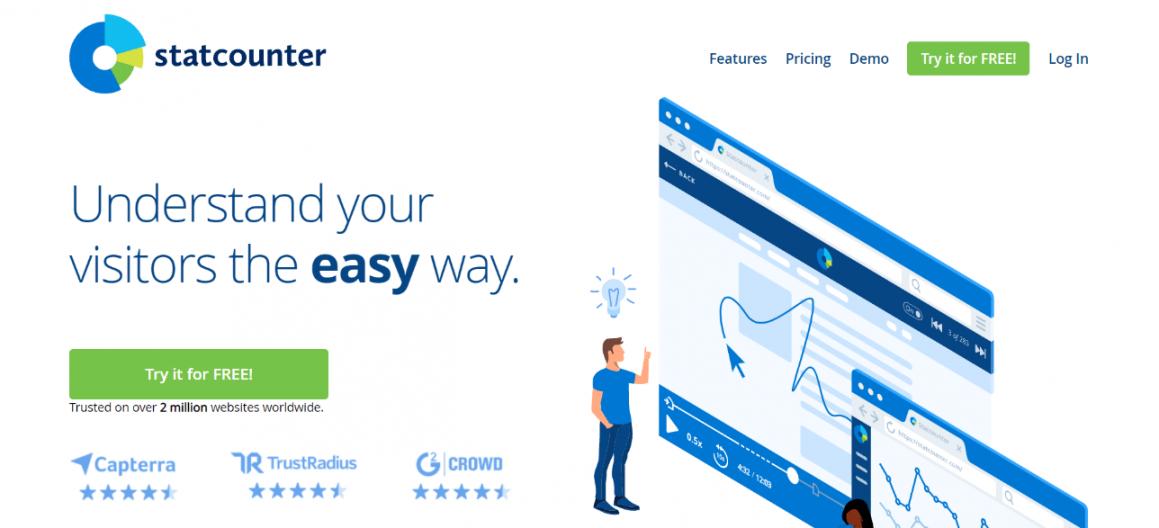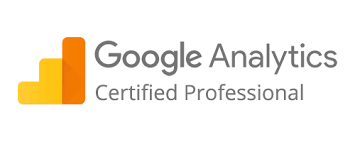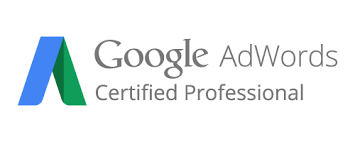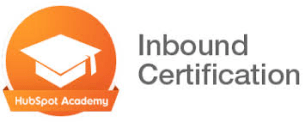A high-performing website is one of the stepping stones to a successful business.
However, building one often requires more than just your time and money.
And this is why more and more marketers are placing their trust in web analytics tools.
So, what are these tools exactly?
In simple words, they help you understand what’s happening on your website, and unearth crucial insights about what’s working (and what isn’t).
You can also use these tools to answer questions regarding your site visitors, such as:
- Who are they?
- How did they find my website?
- How did they interact with my website?
- What sort of content do they like?
This kind of data can help you further optimize your site.
Now, there are hundreds of tools that will make website analytics a breeze for you—Google Analytics isn’t your only option.
So that you can invest your money in the best tool for your needs, we’ve put together a list of the leading web analytics tools.
Ready to take your website to the next level?
Disclaimer: This content contains some affiliate links for which we will earn a commission (at no additional cost to you). This is to ensure that we can keep creating free content for you.
Table of Contents
The Top 6 Web Analytics Tools in 2023
Owing to waning patience levels, people are leaving websites quicker than ever. In fact, you get just a few seconds to impress any new visitor.
What does this mean?
It means that right from the design to the speed to the content, everything on your site must be on-point.
If this sounds daunting, remind yourself that you’ve got help to rely on.
Web analytics tools can help you curate the best experiences for website visitors, thus helping your business grow.
As you go deeper into this article, you’ll learn about some of the best tools—both free and paid, their features, pros and cons, difficulty levels, and more.
Read on to grow your website traffic.
1. Google Analytics

Image via Google Analytics
Google Analytics is one of the most popular web analytics tools, and for good reason. It will fetch insightful website data so that you leave no stone unturned in optimizing your site. What’s more, it is hosted off-site, keeping your data safe and secure.
And the best part?
It’s a free tool.
Features
- You can discover real-time data on your site’s performance.
- It unearths details about your visitors’ interests, professionals, likes, dislikes, and more.
- The Site Search feature can generate a list of all the search terms visitors use on your website.
- The option to filter out internal traffic and exclude your and/or your employees’ interactions on the website.
Pros
- Extremely in-depth information to track several website performance metrics.
- A clean UI and comprehensive reports.
- Advanced bot filtering capabilities.
Cons
- A bit complex for users that aren’t professional web analysts.
- It doesn’t work if cookies aren’t accepted.
- For bigger websites, Google Analytics might sample available data, which may lead to inaccurate results.
Tool Level
- Intermediate/Expert
Usability
- Can be difficult to set up and dissect for beginners.
Price
- Google Analytics is completely free to use.
Pro Tip: Create advanced segments on Google Analytics to monitor traffic based on specific criteria.
2. HubSpot

Image via HubSpot
HubSpot is a spectacular web analytics tool that’s loaded with features. Using the software, you can get a complete rundown of your website’s performance on every level.
The best part?
It also doubles up as one of the best social media marketing tools.
Features
- Reports on detailed metrics such as session duration, traffic, bounce rate, form fills, new visitors, etc.
- A simple drag and drop user interface for refining your web pages.
- The option to set up drip campaigns and turn leads into customers.
- The ability to analyze traffic on desktops, tablets, as well as mobiles.
Pros
- HubSpot supports over 875 integrations.
- It offers several eBooks, guides, as well as free courses for users to learn more about the tool, and digital marketing in general.
Cons
- A bit expensive compared to competitors.
- It can require some hunting around to locate certain features.
Tool Level
- Intermediate/Expert
Usability
- It involves a bit of a learning curve at the beginning.
Price
HubSpot offers a 14-day free trial for its Professional and Enterprise plans. Check out pricing details below:
- Starter: $25/month
- Professional: $400/month
- Enterprise: $1200/month
Pro Tip: Use HubSpot to create trackable events on your website seamlessly.
3. Clicky

Image via Clicky
If you’re looking for a simple, to-the-point web analytics tool, Clicky would be the best choice for you. Over 1.3 million websites depend on this tool to analyze and react to their site traffic in real-time.
Like most analytics platforms, Clicky will help you access critical traffic data so that your website performs at its best.
Features
- You can obtain detailed information about every site visitor.
- The ability to split up visitors into specific segments and target particular groups effectively.
- Website heatmaps by page, visitor, or segment.
- Uptime monitoring for your website from 7 locations around the world.
Pros
- A strong bot detection mechanism.
- Extremely affordable for the features it offers.
- The ability to dive deep into analytics at the user level.
Cons
- Its design can be improved.
- Speed issues can be encountered occasionally.
Tool Level
- Beginner/Intermediate
Usability
- Clicky is incredibly easy to use for both experts and beginners.
Price
Clicky offers a free 21-day trial to all new users. After your trial expires, you can choose one of the following plans:
- Free
- Pro: $9.99/month
- Pro Plus: $14.99/month
- Pro Platinum: $19.99/month
- Custom: Needs to be customized based on your requirements.
Pro Tip: To get even more bang for the buck, use Clicky’s spectacular tools for Twitter analytics.
4. Adobe Analytics

Image via Adobe Analytics
Adobe Analytics is hands down one of the best website analytics tools out there. It leverages machine learning and predictive algorithms to unearth advanced insights on your website traffic.
Let’s take a look at some of its other features.
Features
- With Adobe Analytics’ predictive capabilities, you can do much more with your analytics data.
- Several options for segmentation in its reporting tool.
- The option to look at the value each keyword is adding to your site individually.
Pros
- Fully-customizable reports.
- Easy to create, customize, and use dashboards.
Cons
- It can be costly and challenging for small businesses.
- The user interface is not very intuitive.
- Its customer support services can be improved.
Tool Level
- Intermediate/Expert
Usability
- There is a steep user learning curve.
Price
Pricing details are not mentioned on the website, which means that interested users must contact the sales team and request a quote.
Pro Tip: Request a free demo before you decide whether Adobe Analytics is the right web analytics tool for you.
5. Optimizely

Image via Optimizely
If you don’t try, you won’t know, right? That’s exactly the foundation of the next web analytics software on our list—Optimizely.
So, exactly what does this tool do?
It empowers businesses to leverage continuous experimentation and personalization across websites. The software offers advanced features for you to try out different approaches, and respond to the evolving needs of your visitors.
Features
- Robust A/B testing features for several parts of your site.
- Analytics data that will help you predict customer behavior.
- The Content Cloud empowers you to understand, create, as well as write content for websites.
Pros
- You can import data from any channel through one-click integrations.
- A rich and intuitive dashboard.
Cons
- It’s hard to use all its features without investing in a professional web analyst.
- Customization options are limited.
Tool Level
- Intermediate/Expert
Usability
- The software is a bit difficult to use for those without technical knowledge.
Price
Unlike other web analytics tools, Optimizely neither offers a free trial nor a free account. It has three paid packages you can pick from:
- Content Cloud
- Commerce Cloud
- Intelligence Cloud
For further details on the pricing, you’ll have to contact the sales team.
Pro Tip: For best results, you use both qualitative and quantitative data to guide your A/B tests on Optimizely.
6. Statcounter

Image via Statcounter
Last on our list of the best web analytics tools is Statcounter. Trusted by over 2 million websites worldwide, this analytics platform will feed you with actionable insights on each of your site’s unique visitors.
All you have to do?
Insert a unique code generated by Statcounter on your website, and get going.
Features
- You can track key metrics for any date range.
- Visitor alerts notify users when an individual visitor returns to their website.
- It fetches aggregate information about your visitors’ browsers, screen resolutions, and more.
- The option to monitor the navigation paths your visitors take.
Pros
- It has both web and mobile apps.
- A reasonable and customizable paid plan.
Cons
- Design can be improved.
- Lacks options for segmentation.
Tool Level
- Beginner/Intermediate
Usability
- Statcounter is pretty easy to learn and use on the go.
Price
Statcounter gives users the chance to test out all the features from its Premium plan for free for 30 days. It also has a plan that’s free forever. Let’s check out its paid plans:
- Premium: Starts at €16/month.
Pro Tip: Sync your Google Keywords data with Statcounter, and unearth the terms people are using to find your website.
FAQs
Q1. What is web analytics?
A. Web analytics is the process of collecting, reporting, and analyzing website data. It can help you understand more about your site visitors, along with pointing out what’s working and what isn’t.
When done right, it will help you retain customers, boost site traffic, and improve your bottom line.
Q2. Which web analytics tool is best?
A. Some of the best web analytics tools are:
- HubSpot
- Google Analytics
- Clicky
- Optimizely
- Adobe Analytics
- Statcounter
Q3. What do web analytics tools do?
A. Web analytics tools can measure your site’s performance based on key metrics such as session duration, traffic, bounce rate, new visitors, etc. They give you an overview of how your site is performing, along with pointing out areas for improvement.
Q4. How do web analytics tools function?
A. Most web analytics tools use JavaScript code to track every new visitor, every click, and any other user activity on the site.
Q5. How do I get website analytics?
A. You can get website analytics easily through one of the many online tools mentioned in this article. All you need to do is pick a tool of your choice, create an account on it, and start monitoring data.
Q6. Why are web analytics tools important?
A. Web analytics tools can help you unearth key insights on your website’s performance. They also empower you to understand your visitors’ behavior, create a better user experience, and improve your SEO results.
The best part?
Many of these tools are extremely easy to use and don’t require you to have technical knowledge.
Q7. Which web analytics tools should beginners use?
A. Clicky and Statcounter are spectacular tools for beginners. These tools provide high-quality data on traffic metrics and are incredibly easy to use and learn on the go.
What’s more, they come with free plans that are perfect for beginners with basic requirements.
Q8. What is the future of web analytics?
A. The web analytics market is expected to be valued at $7.05 billion by 2026, with a CAGR of 15.2%. This clearly goes to say that web analytics is here to stay.
Owing to the rising popularity of marketing automation and online shopping, the importance of a high-performing website will only magnify.
Q9. What are the most reliable free web analytics tools?
A. The most reliable free web analytics tool is undoubtedly Google Analytics. It will fetch insightful data on your traffic, along with helping you keep close tabs on all other elements of your site.
The tool also has advanced bot filtering capabilities which ensure that your data is as accurate as possible. Moreover, it integrates seamlessly with several other tools.
Q10. Which is the best web analytics tool for eCommerce?
A. Some of the best web analytics tools for eCommerce are:
- HubSpot
- Google Analytics
- Optimizely
Which Web Analytics Tools Should You Choose?
This would largely depend on the size of your business, your budget, and your requirements.
Remember—there is no one-size-fits-all solution when it comes to web analytics tools.
What works for your competitor, won’t necessarily work for you.
That being said, no matter which tool you go for, you’ll be paving the way for a website that performs better, and visitors that are more satisfied.
Don’t you want that?
So, keep this listicle handy, pick a web analytics tool of your choice, and uncover opportunities you might have missed all this while.
Are there any effective analytics tools that you’ve used in the past? If yes, in what way did that tool improve your website’s performance? Do share your experience in the comments below.
Disclaimer: This content contains some affiliate links for which we will earn a commission (at no additional cost to you). This is to ensure that we can keep creating free content for you.



















